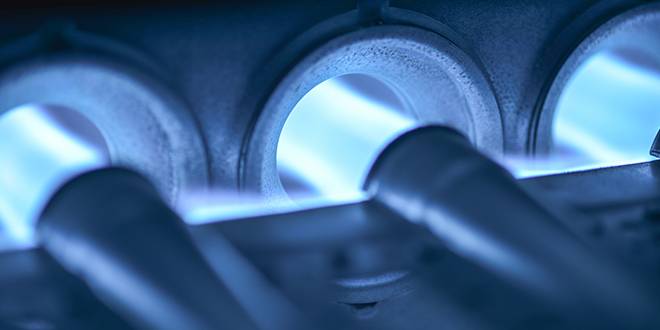
When it comes to heating and cooling systems, whether in your home or at your workplace, efficiency and reliability are paramount. At the heart of these systems lies a crucial component that plays a pivotal role in ensuring your environment remains comfortable all year round: the heat exchanger. But what exactly is a heat exchanger, and how does it contribute to the functionality of HVAC systems?
What is a Heat Exchanger? 🔥🔄🔥
A heat exchanger is a device engineered to transfer heat between two or more fluids (like liquids, gases, or vapors) without them coming into direct contact with each other. This process is essential for heating and cooling applications across various settings, from residential homes to large-scale industrial facilities.
The principle behind a heat exchanger is based on thermal conductivity, where heat naturally flows from a hotter to a cooler substance. By facilitating this transfer efficiently, heat exchangers play a critical role in conserving energy and enhancing the performance of HVAC systems. For instance, in the winter, a heat exchanger in a furnace might warm cool air using the heat produced from combusted gas. Conversely, during the summer, the same principle can be applied in air conditioning systems to remove heat from indoor air and release it outside, thereby cooling the indoor space.
There are numerous types of heat exchangers designed to suit specific needs and applications, including plate, shell and tube, and finned tube exchangers. Each type has its unique configuration and operates slightly differently, but the underlying goal remains the same: to transfer heat as efficiently as possible.
What are the Three Types of Heat Exchangers?
Heat exchangers come in various designs, each tailored to specific needs and efficiency requirements. The choice of a heat exchanger type depends on factors such as the nature of the fluids involved, the desired heat transfer rate, space constraints, and cost considerations. Here, we outline the most common types of heat exchangers used in HVAC systems and other applications, highlighting their unique features and benefits.
1. Plate Heat Exchangers
Plate heat exchangers consist of multiple, thin, slightly separated plates with large surface areas and fluid flow passages for heat transfer. This design allows for a high heat transfer coefficient, making plate heat exchangers highly efficient for transferring heat between two fluids. Their compact size and efficiency make them an excellent choice for residential HVAC systems, especially in spaces where efficiency and space-saving are paramount.
2. Shell and Tube Heat Exchangers
Shell and tube heat exchangers are composed of a series of tubes, one set carrying the fluid to be heated or cooled and the other carrying the fluid that provides the heat or absorbs the cold. One fluid runs through the tubes, and the other fluid flows over the tubes (within the shell) to transfer heat between the two fluids. This type of heat exchanger is particularly favored in industrial applications due to its robust design and ability to handle high pressures.
3. Finned Tube Heat Exchangers
Finned tube heat exchangers feature tubes with external fins that increase the surface area for heat exchange. This design enhances the heat exchanger’s efficiency by facilitating more effective air-to-liquid heat exchange. Commonly used in air conditioning and refrigeration systems, finned tube heat exchangers can efficiently transfer heat in environments where space and efficiency are crucial factors.
Each of these heat exchangers plays a critical role in HVAC systems, offering solutions that cater to varying requirements of heat transfer efficiency, space, and cost. At Infinite Mechanical, we specialize in identifying and implementing the most suitable type of heat exchanger for your specific needs, ensuring that your heating, cooling, and refrigeration systems operate with maximum efficiency and reliability.
How Do Heat Exchangers Work? 🤔💡🔥
Understanding the mechanics behind heat exchangers is essential for appreciating their efficiency and the innovation they bring to heating and cooling systems. Despite the variety in types and applications, all heat exchangers operate on the same basic principle: transferring heat from a hotter medium to a cooler one to achieve thermal equilibrium. This section breaks down the thermodynamic principles that govern heat exchanger operations and outlines the common processes through which they transfer heat.
Thermodynamic Principles
The operation of heat exchangers is grounded in two fundamental thermodynamic principles: conduction and convection. Conduction is the transfer of heat through a solid or between two solids in contact without movement of the material itself. This is the principle at work when heat moves across the metal plates or tubes of a heat exchanger. Convection, on the other hand, involves the transfer of heat by the movement of fluids (liquids or gases) over a surface. In heat exchangers, convection occurs on both sides of the plate or tube, with one fluid gaining heat and the other losing it.
Heat Transfer Processes
Heat exchangers can employ different heat transfer processes, primarily categorized into three types: counterflow, parallel flow, and crossflow. In counterflow heat exchangers, the fluids move in opposite directions, offering a high-temperature difference over the length of the exchanger, hence maximizing heat transfer efficiency. Parallel flow heat exchangers have both fluids moving in the same direction, which leads to a quick equilibrium but generally results in less efficient heat transfer. Crossflow heat exchangers direct the fluids to each other at the right angles, which is common in applications where space is limited.
These processes, facilitated by the heat exchanger’s design, ensure the efficient transfer of heat without mixing the fluids involved. For instance, in an HVAC system, a heat exchanger can transfer heat from the hot air inside a home to the cooler outdoor air in summer or vice versa in winter without the two air streams ever coming into direct contact.
What are the Benefits and Applications of Heat Exchangers?
Heat exchangers are pivotal in maximizing efficiency, conserving energy, and enhancing the performance of HVAC systems. Their benefits, however, extend far beyond these applications, impacting environmental sustainability, operational costs, and system longevity. This section elucidates the multifaceted advantages of heat exchangers and the broad spectrum of their applications.
Efficiency Improvements and Energy Savings
One of the primary benefits of using heat exchangers is the significant improvement in energy efficiency they bring to HVAC systems. By facilitating the transfer of heat between mediums without requiring additional energy input, heat exchangers reduce the overall energy consumption of heating and cooling systems. This not only lowers utility bills but also decreases the carbon footprint of residential and commercial buildings.
Environmental Benefits
Heat exchangers contribute to environmental sustainability by optimizing energy use and reducing greenhouse gas emissions. In industries, they are used to reclaim waste heat from processes, which can then be repurposed to improve overall energy efficiency. This heat recovery process is essential in minimizing the environmental impact of industrial operations.
Diverse Applications
Beyond HVAC systems, heat exchangers find applications in a myriad of settings:
- Refrigeration: Used in commercial and industrial refrigeration systems to transfer heat from the refrigerated area.
- Power Generation: Critical in power plants for cooling purposes, including nuclear reactors, where they are used to transfer heat from the reactor core.
- Chemical Processing: Employed in chemical plants to control temperatures within reactors, enabling precise control over reaction rates and product quality.
- Food and Beverage Industry: Used for pasteurization and other processes where precise temperature control is required for safety and quality.
Maintenance and Longevity
Regular maintenance of heat exchangers is vital for ensuring their efficiency and longevity. Over time, heat exchangers can suffer from fouling, where residues build up on the surfaces, reducing heat transfer efficiency. Proper maintenance involves regular cleaning and inspection to prevent this buildup and identify any potential issues before they lead to system failure.
Heat Exchanger Maintenance and Troubleshooting 🛠️🔍🚫🔥
Proper maintenance and timely troubleshooting are key to maximizing the performance and lifespan of heat exchangers. Given their central role in HVAC systems, any inefficiency or failure can significantly impact comfort levels, energy consumption, and operational costs. This section outlines essential maintenance practices and common issues to watch for to ensure your heat exchanger continues to operate at its best.
Regular Maintenance Requirements
Regular, scheduled maintenance is crucial for keeping heat exchangers in optimal condition. This routine should include:
- Inspection and Cleaning: Over time, heat exchangers can accumulate dust, debris, and other residues that can impede heat transfer efficiency. Regular cleaning, especially of the finned tubes and plates, ensures that heat exchange remains efficient.
- Leak Checks: For certain types of heat exchangers, particularly those in HVAC systems, checking for leaks is essential to prevent the mixing of fluids and potential system inefficiencies or failures.
- Performance Monitoring: Keeping an eye on system performance and energy consumption can help identify when a heat exchanger might be underperforming, signaling the need for maintenance or inspection.
Common Issues and Troubleshooting Tips
Several issues can arise with heat exchangers that may require troubleshooting:
- Fouling: The material buildup on the heat exchanger’s surfaces can reduce its efficiency. Regular cleaning based on the manufacturer’s recommendations is the best way to manage this issue.
- Corrosion: Certain environmental conditions can lead to corrosion of the heat exchanger components, potentially leading to leaks. Anti-corrosion treatments and selecting materials compatible with the exchanged fluids can mitigate this risk.
- Thermal Fatigue: Repeated temperature changes can cause expansion and contraction in the heat exchanger materials, leading to cracks and eventual failure. Ensuring the system operates within designed temperature ranges can help prevent thermal fatigue.
The Importance of Professional Maintenance
While regular user maintenance can go a long way in ensuring the efficiency of a heat exchanger, professional inspections and maintenance are indispensable. HVAC technicians, like those at Infinite Mechanical, have the expertise and tools necessary to diagnose and repair complex issues, ensuring that your heat exchanger and the entire HVAC system function optimally. Professional maintenance also offers the opportunity to update components and systems, keeping them efficient and in line with current technology and environmental standards.
Stay Comfortable with Infinite Mechanical
Ensure your comfort year-round with expert HVAC maintenance and solutions from Infinite Mechanical. 🌡️💨 From efficient heat exchangers to comprehensive service plans, we have your needs covered. Contact us today to enhance your home’s heating and cooling efficiency. Let’s embrace infinite comfort together! ☎️🏠



